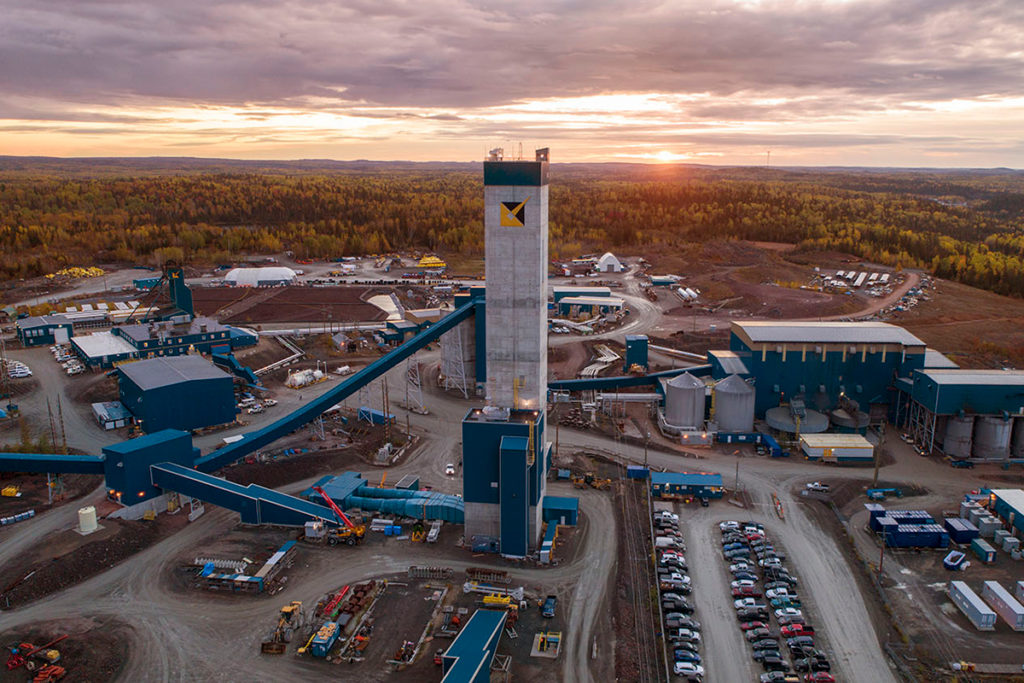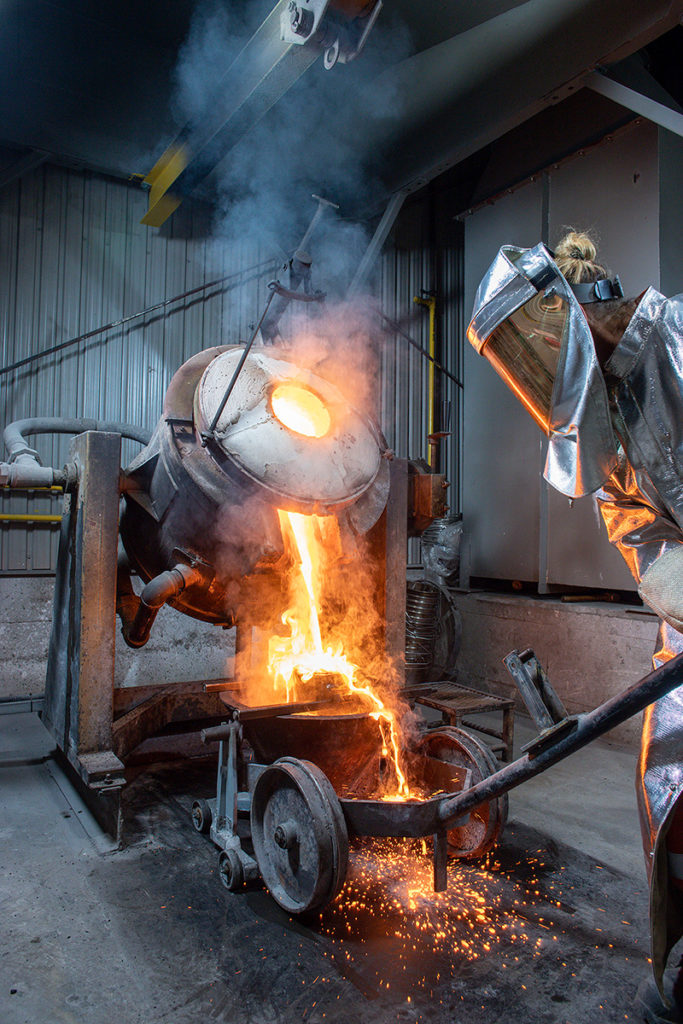JV Article: Alamos Gold continues to exceed expectations with its long-term focus


Canadian miner Alamos Gold (TSX: AGI; NYSE: AGI) may be considered an intermediate company, but it has shown itself to be a growing player in the precious metals’ sector, delivering consistently positive results, increased production and consecutive returns to its shareholders.
With three operational gold mines in Canada and Mexico, as well as a number of other development projects, Alamos continues to build on its reputation as a dependable investment, with a diversified asset base combined with a low political risk profile. And, as the 2021 second quarter results show, the company is well-poised for continued growth, with expanding margins and profitability.
Even though the Covid-19 pandemic did have an influence on its operations, the company still reported a 46% increase in gold production for the second quarter of 2021 compared to the same quarter last year, producing 114,200 oz. gold. Meanwhile, sales of gold in the second quarter of this year increased 55% from the same quarter last year, reaching 107,581 oz., at an average realized price of US$1,814 per oz., for revenues of US$195.1 million.
These positive results for the quarter gave Alamos realized adjusted net earnings of US$38.7 million and allowed it to pay out a quarterly dividend of US$9.8 million to its shareholders, bringing total dividends distributed through the first half of 2021 to US$19.6 million.
For president and CEO John McCluskey, who co-founded the company in 2003, these results are proof that the business plan Alamos has followed continues to be a path to future growth.
“We've been remarkably consistent,” McCluskey says, referring to the company’s dividends. “For the last several years, we've done something like ten consecutive positive quarters. And this reflects not only our assets, but also the entire Alamos team, from the executive side to those at our operations.”
Key to the success of Alamos has been its two operating mines in northern Ontario, Young-Davidson and Island Gold. Both are 100%-owned by the company and have proven remarkably successful.
The company’s flagship operation, its Young-Davidson gold mine, is located about 60 km west of Kirkland Lake near the town of Matachewan, in the Abitibi Greenstone Belt, and is one of Canada’s largest underground mines. The large, low-cost, bulk tonnage Young-Davidson mine has proven and probable reserves of 41.2 million tonnes grading 2.44 grams gold per tonne for 3.2 million oz. gold, while the measured and indicated resources at Young-Davidson total 11 million tonnes grading 3.22 grams gold per tonne for 1.1 million oz. of gold. The operation currently has a 14-year mine life, and produced 136,200 oz. of gold last year.
A multi-year expansion of Young-Davidson was completed In July 2020, which included significant upgrades to its lower mine infrastructure as it transitioned into a larger and more highly automated operation, with the goal of increasing ore capacity to 8,000 tonnes per day.
“Our initial objective was to get to 7,500 tonnes per day, and over the course of the first two quarters of 2021 we worked hard to achieve that end,” says McCluskey. “But we have now actually achieved almost 7,700 tonnes. So, we’re right on track, right where we want to be. All of this expansion work has allowed us to increase the scale of the operation and lower the costs of the operation at Young-Davidson.”
These improvements were reflected in the output from Young-Davidson in the second quarter of 2021, which saw the mine produce 45,100 oz. gold, almost double the 23,100 oz. produced in the second quarter of last year. Meanwhile, mine-site all-in sustaining costs (AISCs) have been reduced from US$1,809 per oz. in last year’s second quarter to US$1,157 this past quarter.

Equally impressive have been the results from the company’s other asset in northern Ontario, the Island Gold mine. One of Canada’s highest grade and lowest cost gold mines, the underground operation is located about 80 km northeast of Wawa, near the town of Dubreuilville. Under previous owners the mine commenced production in 2007, but when Alamos acquired it a decade later, in 2017, many observers thought that Island Gold’s best days were behind it, and that the company had paid too much to add it to their portfolio.
“When we acquired the mine, the market took a very dim view of the acquisition,” recalls McCluskey. “We were really castigated as having grossly overpaid for the asset, having paid US$620 million. And with actual reserves for the mine only showing roughly 700,000 oz. gold, the market wasn't very happy to see us make that purchase.”
However, the Alamos team believed that the Island Gold resource was much larger, and they were right, as Island Gold is now approaching five million ounces of combined mineral reserves and resources with excellent potential for this growth to continue with the deposit open laterally and at depth. In addition, the mine has proven and probable mineral reserves of 4.2 million tonnes grading 9.71 grams gold per tonne, for 1.3 million oz. gold, while its measured and indicated resources are 718 million tonnes grading 7.18 grams gold per tonne for 166,000 oz. gold, making it the sixth highest grade gold mine in the world.
Soon after acquiring Island Gold and confirming its increased deposit, Alamos embarked on an expansion program at the site that ramped up mining and milling rates. The last phase of that program, to be completed by 2025, will see those rates increase to 2,000 tonnes per day, almost double from when Alamos acquired Island Gold.
The expansion work has allowed production from Island Gold to significantly increase since Alamos added it to their portfolio. In the second quarter of this year, the mine produced 33,200 oz. of gold, compared to 19,400 oz. in the second quarter last year.
“It's made it a much more profitable operation,” says McCluskey about the upgrades Alamos has done at Island Gold. “It's clearly been a great acquisition, and it's going to continue to grow. I think the market now recognizes it as a great move for the company. So, we sort of went from zero to hero with this acquisition.”

An important part of the Alamos culture is community engagement and taking care of the health and safety of its employees and contractors, something McCluskey calls a crucial aspect of the way the company operates.
He highlights the way Alamos dealt with Covid-19, in particular at the company’s Mulatos mine in the Mexican state of Sonora. As the pandemic exploded in Mexico in early 2020, Alamos found itself uncertain what the official government response would be. But without waiting, the company prepared for the worst, planned as best it could and then implemented safety protocols at Mulatos that helped mitigate the spread of the disease, including shutting down operations at the mine for a period. The company also extended its support to the local community by providing supplies and extending medical services through the Alamos-built and funded Matarachi medical clinic. Similar efforts were mounted at the Young-Davidson and Island Gold mines in northern Ontario, and McCluskey points to the fact that Alamos was one of the first companies in Canada to implement medical screening and testing of all personnel prior to start of each rotation, with over 50,000 Covid-19 tests completed to date.
The end result is that Alamos has been able to weather the pandemic by protecting its workers and their families and by getting production back online. McCluskey says that the company is back on track to hit its 2021 target of 470,000-510,000 oz. gold produced from its operational mines. This includes 190,000-205,000 oz. from Young-Davidson and 130,000-145,000 oz. from the Island Gold mine. And, he adds, Alamos foresees gold production to keep rising and anticipates that it will increase to about 750,000 oz. by 2025.
“Looking ahead to the future, I am optimistic about the outlook for Alamos because our long-term thinking has paid off,” says McCluskey. “There's little doubt that given the geology of our deposits, these assets will continue to keep going way beyond expectations.”
The preceding Joint Venture article is PROMOTED CONTENT sponsored by Alamos Gold and produced in co-operation with Canadian Mining Journal. Visit alamosgold.com for more information.
Comments